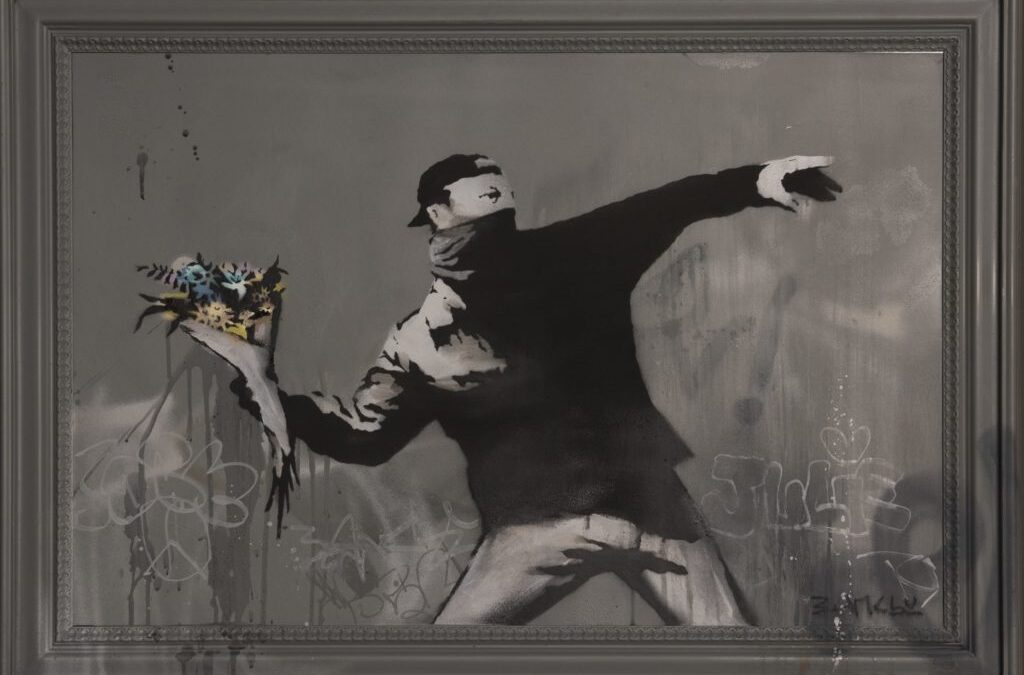The ruling against the anonymous artist came in the midst of a bitter legal battle between him and a greeting-card company that used one of his images.
A panel of three judges from the European Union’s Intellectual Property Office has ruled against Banksy in a two-year-long trademark dispute with a greeting-card company seeking to use his iconic design of a protestor throwing a bouquet of flowers.
Setting a precedent that may put all of the guerilla artist’s trademarks in jeopardy, the panel ruled that because his identity remains a mystery, he can’t claim trademarks to his works.
Remarkably, the ruling also invalidates his UK trademark for the flower-thrower image.
“Banksy has chosen to remain anonymous and for the most part to paint graffiti on other people’s property without their permission, rather than to paint it on canvases or his own property,” the panel said in its decision, published today.
“It must be pointed out that another factor worthy of consideration is that he cannot be identified as the unquestionable owner of such works as his identity is hidden.”
The card company, Full Colour Black, first initiated legal proceedings against Banksy and his legal team, Pest Control Office, in the fall of 2018. Their case hinged on the claim that the artist had no intention of using the trademark he had taken out on the design in 2014.
The artist responded in distinctly Banksyian fashion, launching a shop called Gross Domestic Product to shamelessly peddle his wares. Ostensibly, the idea was to demonstrate that he was using the trademarks on his work.
“Banksy has been forced into the merchandising market,” the artist’s lawyer Mark Stephens, told Artnet News last year. “The European trademark categories became his muse—you have a ludicrous court action being met by creative genius!”
But the ploy appears to have had the opposite effect. In their ruling, the intellectual property judges called the shop “inconsistent with honest practices.”
“The use, which was only made after the initiation of the present proceedings, was identified as use to circumvent the requirements of trademark law and thus there was no intention to genuinely use the sign as a trademark,” the panel wrote.
“Banksy was trying to use the sign only to show that he had an intention of using the sign, but his own words and those of his legal representative unfortunately undermined this effort.”
In an interview with World Trademark Review, attorney Aaron Wood, who represented Full Colour Black in the case, suggested that it could have serious repercussions for the artist’s other trademarks in the EU and the US.
“If there was no intention to use, then the mark is invalid, and there is also the question of fraud,” Wood said. “In fact, all of Banksy’s trademarks are at risk as all of the portfolio has the same issue.”
Banksy’s legal team did not immediately respond to Artnet News’s request for comment.

